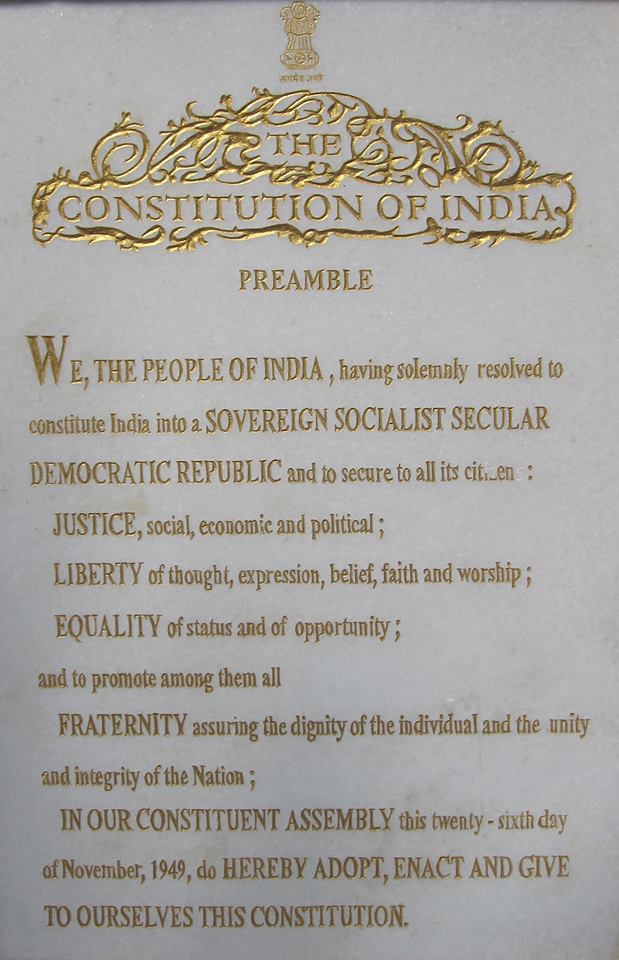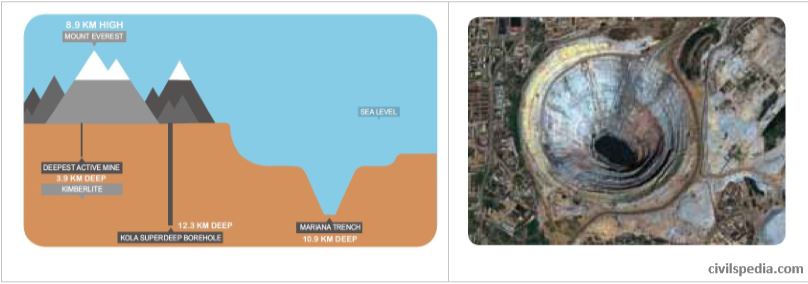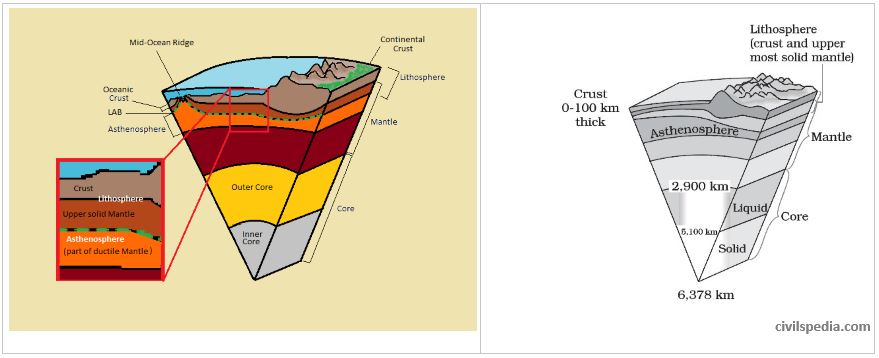Right to Equality
This article deals with ‘Right to Equality .’ This is part of our series on ‘Polity’ which is important pillar of GS-2 syllabus . For more articles , you can click here
Article 14
Article 14 provides – Equality before law & equal protection of law
| Equality before Law | Equal protection of Law |
| British concept | American concept |
| Negative concept | Positive concept |
| Consist of – Absence of any special privileges in favour of any person – Equal subjection of all persons to ordinary law of land | Consist of – Equality of treatment under similar circumstances – Like should be treated alike without discrimination |
Article 31-C
- When Article 31-C comes in Article 14 goes out.
- Article 31-C says that implementing Directive Principles of State Policy (DPSP) under Article 39(b)&( c )cannot be challenged on grounds that they violate Article 14
Article 15
Article 15(1)
- Prohibition of discrimination only on grounds of religion , race, caste , sex or place of birth
- Deals only with actions of state and not individuals
Article 15(2)
- No citizen shall be subjected to any disability only on grounds of religion ,race,caste , sex or place of birth wrt
- Access to shops,restaurants,hotels & places of public entertainment
- Use of wells,tanks,ghats ,roads & public place
- Deals with state as well as private individuals
Exceptions
- Article 15(3) : State can make special provisions for women & children
- Article 15(4) : State can make special provision for advancement of Socially & Educationally Backward Classes and SC & STs
- Article 15(5) : State can make special provisions regarding their admission to Educational Institutions including private ones for above sections (93rd Amendment,2005)
Article 16
- Article 16(1) : Equality of Opportunity in matter of Public Employment
Exceptions
- Article 16(4) : Can provide Reservation in favour of certain Backward Class if not adequately represented
Article 17
- Abolition of Untouchability
- For this Protection of Civil Rights Act (PCRA) ,1976
- Under Act, where any of forbidden practices is committed in relation to a member of SC , the Court shall presume unless contrary is proved , that such act was committed on ground of Untouchability
- This right is available against State as well as Private Individual
- Although term Untouchability is no where defined
Mysore High Court Ruling
- It constitute practice as it has evolved historically in country
- Refers to social disabilities imposed on certain classes of persons by reason of their birth in certain castes
- Doesn’t include social boycott of few individuals or their exclusion from religious services
Article 18
Abolition of Titles and make four provisions
Supreme Court ruling 1996
- It upheld the constitutionality of National Awards like Padma Bhushan etc as
- They are not hereditary . But they cant be used as prefix and suffix in names
- Along with that, clause (j) of Article 51A (Fundamental Duties) exhorts every citizen “to strive towards excellence , so that nation constantly rises to higher levels of endeavour and achievement”. It is , therefore , necessary that there should be a system of awards and decorations to recognise excellence in performance of these duties.
Issues related to Right to Equality
Issue 1 : Classification for Purpose of Legislation
Concept of Equality before Law does not involve the idea of absolute equality among all. Article 14 also includes the phrase ‘equal protection of the laws’ which means right to equal treatment in similar circumstances.
What Article 14 prohibits is ‘class legislation’ and not classification for the purpose of legislation . But the classification should not be arbitrary and have relation to the object of legislation. So Article 14 does not mean that every person shall be taxed equally, but that persons under the same circumstances should be taxed by the same standard.
In order to be reasonable and not arbitrary, a classification must satisfy following conditions
- Classification should be based on intelligible difference which distinguishes those grouped together from others.
- Difference must have a rational relation to the object sought to be achieved by the act.
- Single Individual may be treated as class on account of some reasons applicable to him and not others.
Examples of Classifications
- 25% reservation to children belonging to weaker section and disadvantaged group in private schools.
Issue 2 : Reservation
Reservation in Indian law is quota based affirmative action .
Why founding fathers opted reservation?
- To achieve Equality in true spirit : Although Equality and Reservation are on opposite ends of spectrum but it is well known fact that , unequal persons can’t be expected to compete on equal terms
- To provide justice as enshrined in Preamble .
Points regarding Reservation
1 . All societies face serious challenges due to institutionalised inequality
| US | African Americans + American Indians |
| Europe | Gypsies |
| Australia | Aborigines |
| China | Non Han Minorities |
But nowhere in the world is inequality by birth and moral neutrality to such discrimination so institutionalised as in Indian society.
2 . How Caste System became such an oppressive system ?
This happened because of certain features of Caste System like
- Denial of education for all but a few “upper” castes
- Linkage between caste and occupation
- Institutionalised untouchability
- Tradition of endogamous marriages within caste
3. Even before independence, Reservations had a place in India for over a century
- In 1902, Pune’s Chhatrapati Maharaj reserved seats in educational institutions
- Mysore Maharaja and the states of Madras and Travancore
Constitutional Provisions
- Article 15(3) – State can make special provision for women and children
- Article 15(4) – State can make special provision for the advancement of any socially and educationally backward classes or for the Scheduled Castes and the Scheduled Tribes
- Article 16(4) – reservation of appointments or posts
- Article 16(4A) reservation in promotion for SC & ST .
- Article 46 – To promote the educational and economic interests of SCs, STs, and other weaker sections of society
Types of Reservation
| Vertical Reservation | In case of SC/ST/OBC Quota |
| Horizontal Reservation | Special reservation for women within SC / SC/ OBC |
Important Supreme Court judgements
- MR Balaji vs State of Mysore (1963) :
- Quota cant be more than 50% (reiterated in Indira Sawhney/Mandal Judgement)
- Indira Sawhney Case / Mandal Commission Case : In this , 27% reservation made for backward classes apart from SCs & STs was challenged . Was decided by 9 Judge Constitutional Bench . SC ruled that
- Reservation shouldn’t be more than 50% . 50% rule should be applied each year
- Caste can be made sole basis for determining social backwardness. Caste is quite often is a social class in India
- There is no constitutional bar to classify citizens into backward and more backward classes
- Creamy layer in OBC can and must be excluded
- Creamy layer did not apply to Scheduled Castes (S.Cs) and Scheduled Tribes (S.Ts)
- There should be no reservation in promotion
- Backward class of citizens cant be identified only and exclusively with reference to economic criteria
- M. Nagaraj and others vs Union of India : Supreme Court held that before providing reservations in promotion , “the concerned state will have to show in each case the existence of
- Backwardness to be shown by quantifiable data
- Inadequacy of representation to be shown by quantifiable data
- Overall administrative efficiency will not be effected
- Jat Reservation Case : UPA included Jats from nine states, and two Rajasthan districts, in the central list of OBCs going against advice of NCBC . SC scrapped it ruling that “caste” and “historical injustice” cannot blind a state in according backward status to a community and that new emerging groups such as transgenders must be identified for quota benefits.
Issues with reservation policy of India
- Stagnant: reservation policy was initiated as a temporary provision (for 10 years)
- Hindrance to develop National Consciousness by dividing society on Caste lines
- Elite Sub-stratum : Reservation has created class within class . Presently, it is not the poorest but non-poor, middle income groups of SC/ST/OBC who are beneficiaries of reservations.
- Used as tool of Political Mobilization: Political parties are utilizing caste-based reservation for vote bank politics
- Dissatisfaction: in communities excluded from reservations
Reforms required
- Develop Capabilities: Best way is develop the capabilities of the deprived and excluded section .
- Deprivation Points – JNU implements this system of admissions which takes a more nuanced view of disadvantage .
- Use Socio-Economic Caste Census data : Data in SECCs, which takes a broader view of deprivation should be used
- Introducing Reserved category certificate which can be used only once in 20 years
Benefits
After Tina Dabi (SC Girl) & Kanishk Kataria (SC boy) topped UPSC Civil Services examination , some experts have been trying to give it as an evidence to positive impacts of Reservation given to SCs/STs.
Note : some people say that they oppose today’s reservations because they believe reservation should be made on the basis of income rather than social background. However, reservation is intended not to be an anti-poverty programme. The government has many programmes which are, in principle, accessible to all poor people. Reservation exists because, in addition to being more likely to be poor than general castes, Dalits, backward Muslims, and Adivasis face social discrimination and exclusion that poor people from general caste backgrounds do not face. Reservation is a useful tool to level the playing field: we cannot expect groups who have been historically deprived of education, skills, and access to other means of economic mobility to suddenly start competing with those from groups who have had access to these means for centuries.
Issue 3 : Reservation in Promotions
- Indira Sahni Case : There should be no reservation in promotion
- 77th Amendment & Article 16 (4A): overturned Indra Sawhney on the issue of promotions (Article 16(4A) provides reservation in Promotion)
- M. Nagaraj vs Union of India : Supreme Court held that before providing reservations in promotion , “ concerned state will have to show in each case the existence of
- Backwardness to be shown by quantifiable data
- Inadequacy of representation to be shown by quantifiable data
- Overall administrative efficiency will not be effected
Issue due to Judgement : requirement for quantifiable data had made it difficult to extend quota benefits to employees. Government was of the view that being SC/ST is itself proof that they are backward and no other data is required
Sept 2018 Judgement : Main points
- There is no need to show backwardness by quantifiable data but bench did not make changes about the two other conditions given in Nagaraj verdict which dealt with adequacy of representation and administrative efficiency.
- Court also asked the government to examine the possibility of introducing creamy layer for Scheduled Castes (SCs) and Scheduled Tribes (STs) says that if some sections bag all the coveted jobs ,it will leave the rest of the class as backward as they always were
Points in favour of reservation in promotions
- Skewed SC/ST representation at senior levels– representation of SCs/STs, though, has gone up at various levels, representation in senior levels is highly skewed against SCs/STs due to prejudices.
- + all points in favour of reservations
Points against reservation in promotions
- Hurts efficiency of administration: This aspect becomes important in highly technical domains such as Nuclear research, space program, etc.
- Provisions under articles 16(4) & 16 (4A) of Constitution are only enabling provisions, and not a fundamental right.
- In a case the Supreme Court ruled that no reservation in promotions would be given in appointment for faculty posts at the super specialty block in AIIMS.
Issue 4 : Upper Caste Quota
103rd Constitutional Amendment Act
- Article 16(6) -provides 10% resevation for Economically Weaker Section (EWS) in higher education & government jobs
- Such reservation will not apply to minority educational institutions.
Eligibility
- Annual salary of less than ₹8 lakh per year
- Owns less than 5 acres of land

Points in favour of this quota
- DPSP contained in Article 46 of the Constitution enjoins that the State shall promote with special care the educational and economic interests of the weaker sections of the people
- Ram Singh v. Union of India (2015) – SC asserted that there is a need to evolve new yardsticks to move away from caste-centric definition of backwardness as social deficiencies may exist beyond the concept of caste (e.g. economic status / gender identity as in transgenders).
- It will lead to destigmatisation of reservation .
Points against this quota
- Legal arguments
- Indira Sawhney Judgement : backward class cannot be determined only and exclusively with reference to economic criterion
- Breaches 50% ceiling & hence against Right to Equality
- Constitutional
- violative of the basic structure of the Constitution
- Assembly Debates
- B R Ambedkar in his speech in the Constituent Assembly explicitly said that equality of opportunity would require that reservation should be for the “minority of the seats” and only in favour of “backward classes who had not so far had representation in the state”.
- Historical Argument
- From the Poona Pact (1932) between M K Gandhi and Dr B R Ambedkar to the Constituent Assembly debates, reservation was talked about in the context of social backwardness of classes. The 124th Amendment makes a departure by extending reservation to the economically disadvantaged.
- Reservations can’t go to a section that is already adequately represented in public employment. Government doesn’t has quantifiable data to show that people from lower income groups are under-represented in Service
- Practical Issue: taxable population is still very low due to misrepresentation of income, implementing economic eligibility criteria would be a bureaucratic nightmare.
Issue 5 : New Communities Demanding Reservation
Following new communities are demanding reservation
- Jats in Haryana
- Patels/Patidars in Gujarat
- Kapus in Andhra
- (Dec 2018) Marathas : Maharashtra State Assembly unanimously passed a Bill providing 16% reservation for Marathas).
Important point to note that all these castes are mainly agricultural castes & are well placed in social hierarchy .
Reason for increase in demand now
- Squeezing of agricultural incomes after LPG reforms + Average size of farms is decreasing making agriculture unviable.
- Inability to fit in Post Reform Economy – Post- LPG reforms skill intensive jobs have been created in service sector . But these communities have not acquired sufficient education to fit in service sector
- India’s Jobless Growth : Although India has been able to grow at rate of around 7% but this growth was jobless
- Resentment against other OBC communities like Kunbi, Yadav, Gujjar, Reddy , and Saini which are socially and economically placed on same position is rural society are in OBC category.
- Political Support : These communities know that they have political support as well as numbers to bend political parties according to their needs .
- Competition for fewer brides : These castes have skewed sex ratio and Parents of girls prefer grooms with stable income – those with government jobs are often their preferred choice.
Solutions
- Make available quality education to whoever wants
- Fast, job-producing economic growth.
- Relooking at feasibility of implementation of MS Swaminathan Report











